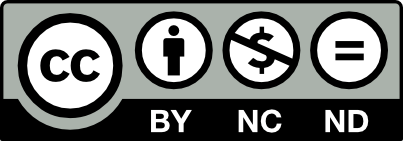This page is licensed under Creative Commons under Attribution 4.0 International. Anyone can share content from this page, with attribution and link to College MatchPoint requested.
The Real Numbers Colleges Don’t Advertise: Effective Regular Decision Admit Rates
When families see a college’s admit rate, it looks simple. If a school reports an admit rate of 15%, you might assume your student has a one-in-six chance. At colleges that offer Early Decision (ED), the reality is much different.
The overall admit rate blends two very different pools: students admitted through binding Early Decision and students admitted through Regular Decision. Because a large portion of the class is already taken in November, the students who apply in January are competing for far fewer seats. That’s why the number that matters most is the effective Regular Decision admit rate—the real odds once Early Decision students have already filled their spots.

What Is the Effective Regular Decision Admit Rate?
Picture a freshman class as a pie. In November, colleges slice out a big chunk for Early Decision admits. By January, only a smaller piece remains.
The effective Regular Decision admit rate is a recalculated number that shows the actual chances once those seats are gone. It answers the question parents really need answered: If my student applies in January, what are the odds compared to the overall rate the college publishes?
At colleges with Early Decision, the effective Regular Decision admit rate is almost always lower than the headline number.
The Big Picture
Our review of over 200 colleges that use Early Decision shows how much the math changes:
- Average Early Decision admit rate: 44%
- Average effective Regular Decision admit rate: 27%
- At the most selective colleges, the effective Regular Decision admit rate often drops below 10%
The number colleges promote is rarely the number your student faces in January.
Examples That Show the Gap
The difference between ED and RD is dramatic:
- Tulane University: ED admit rate 68%, effective RD admit rate 6%
- Northeastern University: ED admit rate 39%, effective RD admit rate 3%
- Vanderbilt University: ED admit rate 17%, effective RD admit rate 3%
- Brown University: ED admit rate 13%, effective RD admit rate 3%
- Boston University: ED admit rate 26%, effective RD admit rate 6%
- Amherst College: ED admit rate 27%, effective RD admit rate 7%
- Washington University in St. Louis: ED admit rate 26%, effective RD admit rate 6%
Across selective schools, the pattern is clear: the odds in January are much tougher than the overall admit rate suggests.
Why This Number Matters for Families
For students and parents, the effective Regular Decision admit rate is one of the most important numbers in the admissions process. It clears away confusion and shows what’s really happening.
- It corrects the false impression of the overall admit rate.
A 15% admit rate doesn’t mean every applicant has those odds. If half the class is taken in November, the January admit rate could be closer to 5%. - It shows the real Early Decision advantage.
At schools like Tulane, Vanderbilt, and Northeastern, ED students are admitted at rates three to five times higher than RD applicants. That kind of gap can change everything for a family making application decisions. - It frames the trade-offs clearly.
Early Decision is binding, which means no comparing aid offers. But if the odds fall from 30% in ED to 5% in RD, the benefit of committing early becomes easier to measure. - It helps set expectations.
Parents want to encourage ambition while avoiding heartbreak. Knowing the effective RD admit rate lets families talk honestly about reach schools and balance the list with colleges where chances are stronger.
This number isn’t just another statistic. It’s a reality check that helps families make smarter choices, plan with confidence, and avoid surprises.
When Early Decision Fits
Apply Early Decision if:
- Your student has a clear first-choice college
- The application is strongest by November
- Your family is financially ready to commit without comparing aid packages
When to Hold Back
Skip Early Decision if:
- Your student is still exploring colleges or majors
- The application will be significantly stronger by January
- Your family needs to compare aid offers
Even if you hold back, knowing the effective Regular Decision admit rate helps keep expectations realistic.
A Family Timeline
- September: Identify two to three possible ED colleges. Research their effective RD admit rates.
- October: Confirm essays, recommendations, and test scores are ready.
- Late October: Compare options on fit, cost, and the ED vs RD gap.
- November: Apply ED if the choice is clear. Add Early Action schools to keep options open.
Final Word
At the 200 colleges that use Early Decision, the overall admit rate doesn’t tell the real story. The effective Regular Decision admit rate is the number that matters for January applicants—and it is almost always much tougher.
Families who understand this figure make smarter choices, set realistic expectations, and avoid the shock of discovering too late how steep the Regular Decision climb can be.


